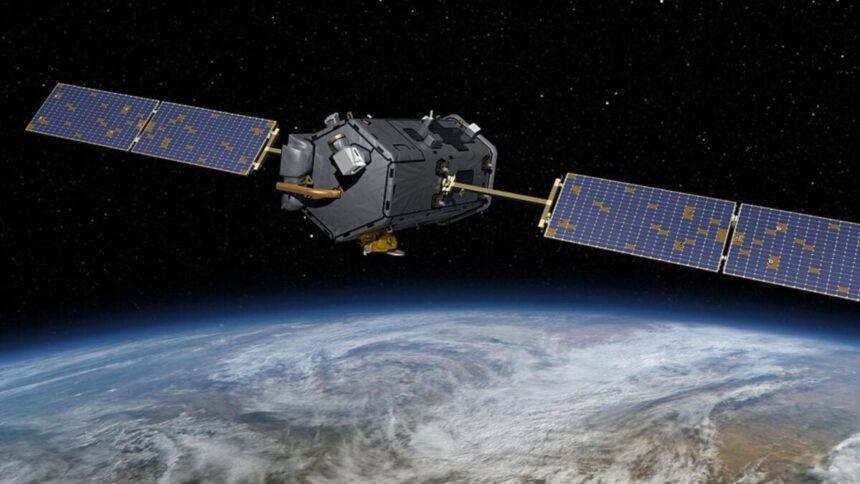In 1994, two Canadian TV satellites failed within mere hours of each other. The pair was in a geostationary orbit when a major solar storm hit, resulting in electrostatic discharges that disabled their control electronics. Anik E1 and E2 are just one example of the effects of electric charge buildup on satellites, known as spacecraft environment discharge.
New findings show a direct correlation between a spacecraft’s electric discharge and peaks in the flux of electrons in space, identifying hundreds of incidents that can cause these surges and long-lasting damage to satellites.
A team of researchers from Los Alamos National Laboratory placed two sensors onboard the U.S. Department of Defense’s Space Test Program Satellite 6 (STP-Sat6) to monitor its charged environment in geostationary orbit. Over more than a year of data, the researchers identified 272 incidents of high-rate electrical discharge on the satellite, each occurring 24 to 45 minutes after periods of peak electron activity in space.
These findings, published in Advances in Space Research, could eventually be used to develop ways to forecast spacecraft discharge ahead of time and mitigate the effects of the surrounding space environment on satellites.
Charged environment
The space environment is filled with charged particles that mostly come from the Sun in the form of solar wind—a continuous stream of protons and electrons from the star’s outermost atmosphere—and solar flares—large eruptions of electromagnetic radiation. Earth’s orbit is also brimming with charged particles from the planet’s ionosphere and magnetosphere.
While in orbit, spacecraft are bombarded by charged particles, which can degrade their performance over time or cause sudden disruptions. Spacecraft environment discharge is highly concerning for satellite operators, resulting from the buildup and sudden release of an electrical charge on a satellite. When different parts of the spacecraft reach different voltages, it can cause sparks, electromagnetic interference, and transient currents. As a result, spacecraft can either experience temporary blips or become permanently damaged.
A key correlation
The new study is the first time researchers have confirmed that the number of electrical charges on a spacecraft is directly correlated with the number of electrons in its surrounding environment in space.
The pair of sensors used for the study measured both the radio frequency of the electrical charges as well as the activity of electrons. The sensors allowed the researchers to measure the rate at which the electrical charges occurred and compare it to the amount of electrons in the surrounding environment.
In the majority of the cases, electron activity peaked 45 to 24 minutes before a discharge of electrical currents took place on the spacecraft. This suggests that high-flux electrons peak first, charging electrical currents on the spacecraft before leading to a number of discharges in and around the spacecraft, according to the study.
“We observed that as electron activity increases, the spacecraft starts to accumulate charge. This continues until a tipping point is reached and SEDs occur,” Amitabh Nag, a scientist at Los Alamos National Laboratory and lead author of the study, said in a statement. “That lead time opens the door for potential forecasting tools to mitigate risks.”
Read the full article here










